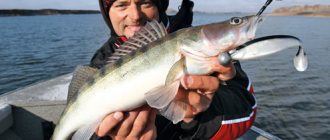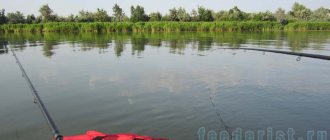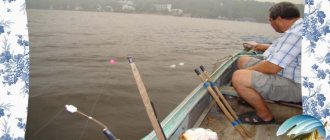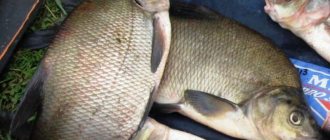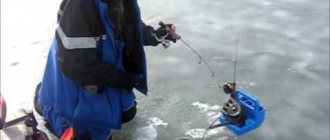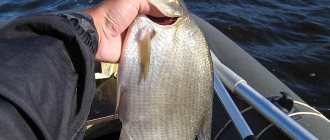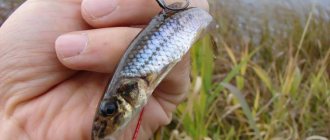About how to stage such a dance, what types of techniques and tricks to use for a spinning choreographer, how to prepare for such a process, what technique and tactics of wiring to choose when fishing with a jig, what baits to use for catching both sea and freshwater fish with different natural conditions and places - we will tell you right now.
Content
- 1. A little history
- 2. General description of jig fishing technique
- 3. Jig baits
- 4. Types of postings
- 4.1 Classic jig
- 4.2 Uniform wiring
- 4.3 Uneven wiring
- 4.4 Stepped wiring
- 4.5 Dragging along the bottom
- 4.6 Wave wiring
- 4.7 Bottom jumps
- 4.8 Twitching
- 4.9 Trolling and jigging baits
General description of jig fishing technique
Jig fishing is intended for catching predatory fish that lead a bottom-dwelling lifestyle using jig baits.
The peculiarity of this type of fishing is its ease of execution, which does not require special practice of wiring. Ideal for beginner spinners.
The advantage of jig fishing over other spinning rods is the ability to fish the bottom of the pool at different depths and distances.
Fishing is seasonal - all year round, but is especially effective in the cold season, when all the fish accumulate at the bottom in search of food.
Jig baits
Classic lures made of foam rubber are not expensive and can be easily made at home.
One of the secret ways to make reliable foam bait from the “Simple Fish” channel
Silicone is the most popular. Their peculiarity is that they imitate not only fish, but also various sea creatures: crayfish, worm, cuttlefish, octopus, etc. Silicone is used with flavorings for greater bite efficiency - edible silicone .
Types of silicone baits:
- octopuses;
- twisters;
- worms;
- slugs;
- vibrotails;
- creatures.
Read more about the Octopus silicone bait, its features, advantages, installation methods and fishing techniques here
Prefabricated or combined baits are invented by fishermen using a soldering iron, by connecting several silicone parts into a single structure.

Edible food during winter fishing
Date: January 10, 2021 | 023
Since it’s not winter yet, it’s worth mentioning one very interesting question: do silicone baits, edibles, work when fishing in winter from ice? Indeed, since one of the main topics of this blog is silicone lures, it’s a good idea to figure out whether they are relevant only in open water for spinning fishing. Or there is an opportunity to successfully catch fish on them all year round, including in winter, from ice, from holes. In this review I will share my thoughts on this topic.
Predatory fish, at least our main freshwater predators, are active in winter. Perch is almost the main winter fish in most of our freshwater bodies. In winter, at times, both pike and pike perch are caught well. Asp, chub, etc. It is very difficult to catch white predators from the ice and this happens rarely. But the burbot turns on. The catfish has been turned off since the onset of the autumn cold snap (if only in places where thermal power plants are discharged, but there is no ice there either...). So, there is someone to catch.
And, if we successfully catch perch, pike and pike perch from the ice using jigs, winter lures, balance beams, etc., why not try fishing with silicone baits and modern edibles. And nothing interferes! Moreover, fish are being caught. The only problem so far is that very few people practice this kind of fishing. There are few experimenters who are ready to challenge the traditional set of winter artificial baits and begin mastering winter fishing with silicone . Well, in order for things to move more actively, let’s look at the features, problems and opportunities faced by a winter fisherman who is planning to pamper a winter predator with some food.
In fact, in the summer we fish with an ultra-delicate spinning rod, a nanojig. They use thin fishing lines, the lightest installations, 90% of which are presented in the form of jigs, weighing up to 1g. We use miniature silicone baits or homemade edible silicone baits. What is stopping us from adapting the same equipment to a winter fishing rod and fishing through the hole, from the ice, using mainly the vertical component of the game. Yes, nothing interferes! And if you are fishing for pike or pike perch, then it is quite possible to fish with larger silicone baits, 2” and 2.5” in size, and maybe even larger.
The simplest version of fishing gear for edibles in winter will look like this. Essentially, this is a winter jig rig for vertical fishing. And now I’ll briefly tell you how to do it. An ordinary light, short winter fishing rod with a reel or reel. Thin fishing line, as we usually use in winter. If for perch, then 0.06-0.08mm, if for pike or pike perch, then 0.12-0.14mm. To the end of the fishing line we tie a jig or a gram eared fish with a small single hook. We attach an inch twister or some other silicone of comparable size to the hook. That's all. We drill a hole, fish the bottom layer, sometimes tearing the bait from it, sometimes trampling along the very bottom.
Yes, if we are talking about targeted hunting for winter pike, you should limit yourself to one bait. Take something larger for this quality, 2.5”, 3”, maybe even more. I prefer narrow-bodied edible vibrotails. And, of course, place a small leash made of the finest steel in front of the bait.
If the bottom is heavily silted, or the fish does not take from the very bottom, then it makes sense to look for it a little higher. To do this, we will make a tackle that essentially resembles a drop shot. At the end of the line we tie a weight, usually a little heavier than we would use just for jigging. And above, 30-50cm from the sinker, there is a hook. And on the hook we put the same miniature silicone, or a cut of edible food.
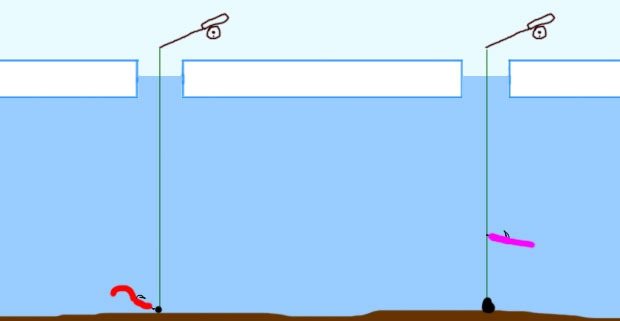
And with these two simple, and, in principle, obvious installations, you can successfully catch predatory fish in winter, from holes, using silicone baits.
By the way, about the aforementioned delicate winter drop shot. You can tie not one hook, but 2-3. And fish with different baits in different layers of water. You can tie the hooks directly to the fishing line, or you can form short leashes to give the bait more liveliness. This, it turns out, is already a garland. Only in the summer we drag it along the bottom, but here we work in a vertical plane. In fact, this is a tyrant, well known to those who fish in the sea. In particular, fish such as smelt are caught using this kind of tyrant, only pieces of colored gum (cut condoms...) or colored threads are used as bait. So, what we will use for our traditional predators is just a slightly larger version of the long-known rigs.
There are several options for tying such leashes. The first and simplest. We string 2-3 hooks onto the fishing line. Stings towards the end of the line. We grab the ring of each hook with a single knot. We form a short leash and secure it with a double knot. This leash made of double fishing line has a length of 3-6 cm.
The second option is to simply tie a short leash with a hook to the main fishing line. You can simply splice it with a knot or connect it in a loop-to-loop manner.
Which lures from the wide variety of silicone are relevant to use in winter, when ice fishing. Small twisters and vibrating tails work well. The tails of these active baits work both on the rise and on the fall. The size of such baits greatly depends on the size of the fish and its behavior. If you catch small and medium-sized perch, then use baits of 1”, 1.5”, 2”. And if they catch pike perch, pike, or catch a large perch, then larger tires are used.
In addition to twisters and vibrotails, you can use slugs, crayfish, and silicone worms. Those. full set.
Since small-sized baits (1-1.5”) are not so common, cutting is often used. We simply take a sharp knife or blade and cut narrow strips from large edibles (worms, slugs, vibrotails). This is how you get homemade silicone worms or slugs. By holding and playing with these baits using short pulsating movements in the vertical plane, they provoke the fish to attack.
In addition to classic edibles and slicing, in winter it is important to use silicone imitations of bloodworms, maggots, and various nymphs. Also, there are baits such as caviar made from edible silicone. And this is also worth trying to catch.

Since frost has a bad effect on silicone and can freeze it with an icy crust at the slightest exposure to air, you should be careful about this point. Keep packs of edibles and slices warm, in your breast pocket. And the baits that are in use must be warmed up and the ice crust removed if it has managed to form during the process of manipulating the tackle.
There is one point that is also worth pointing out. Edible silicone works in winter, alas, mainly after the bite, when the bait is already in the mouth of the fish. The fact is that in cold water attractant particles spread extremely poorly when compared with warm water in the summer. This comes from the characteristics of the diffusion process. Microparticles mix more actively as the temperature of the medium increases. So, the factor of attracting fish from a distance by the smell of bait is almost completely neutralized. But when the fish grabs, its receptors sense the attractive composition of the attractant and the presence of salts. And the fish tries to hold on and swallow such bait more actively. Hence the conclusion that it is better to use a full-fledged edible product in winter, or cut from it, than regular silicone, or simply anointed with an attractant. So, when ice fishing, I would advise using edible silicone from leading Japanese brands, saturated with both attractant and salts.
Fishing in winter, in holes, with a slight current may be more interesting. If fishing takes place in still water, then the angler is very limited and can only fish a small area of the bottom, which is directly under the hole. If there is a current, then it becomes possible, by changing the weight of the weight and manipulating the swings of the fishing rod, to fish a certain strip along which the current carries the tackle.
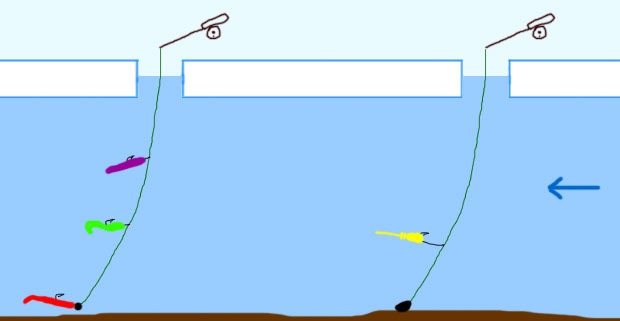
Also, you can diversify your fishing if you drill directly above a fairly steep drop or edge. Then you can fish some area with variable depth, jumping along the slope.
Thus, you can try fishing in winter, from holes, with our usual summer silicone baits! I do not urge all winter travelers to urgently abandon their usual winter spinners and balancers and switch to silicone fishing. No! But, at a minimum, diversify and experiment. Periodically trying to fish in winter with such baits is very worth it. At least put edible fish on the hooks of classic winter baits and combine them.
Share with your friends:
Categories: Fishing for food · Tags: Winter, Places, Perch, Lures, Pike-perch, Edible, Equipment, Pike
Types of postings
4.1 Classic jig
This type of wiring has other names: Russian or stepped.
Universal classic wiring is suitable for jig fishing for various fish: catfish, barbel - in Israel, and if fishing takes place in the Russian open spaces, then also crucian carp, pike, perch, pike perch and roach, both from the shore and from a boat. The ideal places are those that go from top to bottom, going deeper, that is, down “stairs”.
Features - the bait can be used in different currents (even across the current).
The type of bait is active silicone rubber (vibrating tails, twisters) and passive - slugs. It is possible to use crayfish and worms, but less often.
Can be done in two ways. Method 1 “using a coil” How to do:
- Place the tip of the spinning rod above the surface of the water so that an angle of 45 degrees is formed.
- Cast the bait.
- Wait until it sinks to the bottom.
- Make a few turns of the reel handle and stop. This procedure will allow the bait to hover above the bottom for a distance of 1 to 2 m, and during a pause (1-4 seconds) to land on its surface. When hovering the bait, you need to remove the slack of the fishing line by reeling it in. The number of revolutions affects the distance traveled by the bait.
- Then repeat everything.
Important! The weight of the load and the number of turns of the reel handle depend on the depth and current.
Method 2 “reel + spinning rod”. The peculiarity of this method is that the bait rises due to a slight twitching of the tip of the tackle. Then 2 or 3 turns are made with the reel and there is a pause to lower the bait to its original position.
For step-by-step wiring, a classic installation is used, when the bait is mounted on a jig head or on a hinged jig installation, when a Cheburashka sinker is connected to an offset hook (double, tee).
The advantages of this installation:
- natural behavior of the bait;
- attractiveness of movements in water;
- good range;
- the ability to use different types of installation of hooks and their sizes in accordance with the weight of the weight.
Minuses:
- not suitable for installation of vibrating tails;
- high price for installation accessories.
- high probability of snags.
4.2 Uniform wiring
This method is suitable for catching an exceptionally active predator, when when the bait is lowered to the bottom, its retrieval immediately begins, or even when the spinner does not wait for its touch, but begins to fend off the bait in the water column. Moreover, the location of the tackle will affect the depth of the bait. So, if the tip is raised, then the wiring will be superficial and vice versa. If only a reel is in action, then rapid rotation brings the bait closer to the surface, etc.
The advantage is that by selecting the desired diameter of the fishing line and the weight of the equipment, the angler himself regulates the wiring in a particular water layer.
Feature - the choice of bait should be made exclusively in favor of those types of edibles that play well. Passive ones are not used.
4.3 Uneven wiring
Uneven guiding of the bait comes down to accelerating, slowing down the bait and making pauses of different times. In this case, the fisherman has the opportunity to use a wide range of baits, but spinners (oscillating ones) are especially catchy.
4.4 Stepped wiring
The stepped wiring diagram looks like this
Suitable baits:
- wobblers;
- spinners;
- lures for jig fishing.
Advice . You need to choose the right weight of the load, since with a heavy weight the equipment will sink in the silt, and with a light weight the bait will float in the water.
4.5 Dragging along the bottom
Used when fish are passive.
Advantages:
- the bottom is studied;
- a large area of bottom relief is fished;
- an additional irritant for fish is created - dregs.
The speed of dragging the bait can be different; when stopping, you need to be careful, because it is at such a moment that bites occur.
It is better to use baits with a high degree of buoyancy, since in a calm position it becomes in the position of a feeding fish - with its tail up.
Soft baits will also show their effectiveness with this method:
- crayfish;
- cuttlefish;
- worms;
- nymphs
To drag along the bottom, you need to place the tip of the spinning rod towards the bottom and slowly work the reel. In such a situation, the hinged installation will play a positive role, which will help attract prey from the turbidity collected around it as a result of dragging.
4.6 Wave wiring
Wiring techniques:
- Smooth reeling of the reel and the same movements with the tip of the spinning rod up and down.
- Reeling in the reel with slowdowns, during which the bait sinks and rises up by moving the top of the spinning rod.
4.7 Bottom jumps
In this type of jigging, the main role is played by the tackle, which, when the bait settles to the bottom, the spinner begins to tug, providing a “jump” of the bait, then pauses, at which time the silicone settles to the bottom, etc.
Advice:
- Don’t forget about the sagging line;
- use passive baits; it is also possible to use vibrotails and twisters.
4.8 Twitching
The most rare tactic when fishing with jig baits, but in vain. This kind of wiring should be used for passive biting, when the spinning rod provokes such fish into action with jerky movements.
Read a detailed description of twitching, its features, tactics and secrets here
With this twitching, rubber is used, similar to wobblers.
4.9 Trolling and jigging bait
Read about whether trolling with jig baits is possible in this article https://sedobka.ru/lovlya-na-sedobku/silikonovye-primanki-dlya-trollinga.html
Classic jigging process
First you need to cast. The bait should sink smoothly and freely to the very bottom of the reservoir. This will be visible from the sagging line. The spinning rod should be held at an angle of 45 degrees relative to the water. You need to make about 4 turns of the reel handle and wait until the bait falls to the bottom again. After this, you need to repeat the winding again.
An angle of 45 degrees is necessary for effective hooking. Experts recommend not to exceed a right angle, since not every top of the spinning rod is able to withstand the loads during the process of hooking “over the head” . The bait is detonated using a spinning rod with a change in its position. The top of the rod is directed after casting to the place where the bait splashes down in a parallel position relative to the surface of the reservoir.
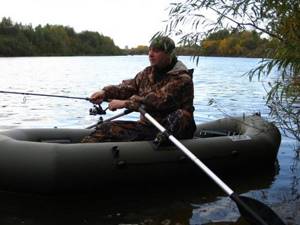
The fisherman takes out the slack in the fishing line, and the spinning rod is moved from a parallel position to a perpendicular one. It is necessary to wait for the bait to fall to the bottom (during the fall, the rod must be moved to 45-60 degrees, while picking up any slack in the fishing line) and repeat these steps again.
This fishing technique has a lot of advantages, which include quick and sharp detonation of the bait from the bottom. Thanks to its high acceleration, the bait can create vibrations in the water, which in turn will attract fish even at a great distance. However, using this method, it is quite difficult to control the bait when retrieving and often contact with it is lost.
The bite is detected by changes in the tension of the braid and the tip of the rod. The hook must be performed in a timely manner, immediately after the blow or the first poke. Almost 60% of bites occur when the bait is lowered to the bottom, so you need to carefully choose a balanced rig that will provide maximum free fall time on a short step. It is also necessary in this case not to cause harm to the gear itself.
It is also necessary to mention that when fishing with a jig downstream, you should use a smaller weight of the sinker than when fishing against the flow of water.
Search fishing
Exploratory fishing involves quickly fishing a large area of a reservoir, the purpose of which is to identify the largest concentration of fish. For the most part, search fishing is used on an unfamiliar body of water and is characterized by such an expression as “take more and throw further.” That is, the fisherman takes a weighted jig head and casts it as far as possible. Next, the classic step is carried out at an accelerated pace.
After discovering a promising place, the heavy jig head is replaced with a light one, with the help of which a soft presentation of the bait is achieved. Further, the pace of the retrieve decreases, and the bait itself, after detonation, should reach the bottom in about 10 seconds.
Heavy and light jig
The name comes from the use of heavy jig baits in fishing, for example a locomotive bait: a fish with pockets and a double, then there is an extension link and two Cheburashka weights, fastened with a factory ring.
Places of application: river and pond with standing water.
Wiring type – combined.
- micro-jig – from 1 to 1.5 g;
- mini-jig – from 1.5 to 3 g;
- light jig - from 3 to 10 g;
- medium jig - from 10 to 20 g;
- super-heavy - more than 50 g.
Tackle
In essence, the gear for ice fishing in winter is not much different from summer: small rigs, soft silicone bait. The diameter of the fishing line for pike or pike perch ranges from 0.3 to 0.35 mm. When fishing for pike, a prerequisite is the use of a soft steel leash. It will help protect the tackle from pike teeth. The next steps are as follows.
- tie the jig head to the end of the fishing line;
- A silicone bait is attached to the hook. Choose it so that it matches the hook number.
READ Tapeworm in fish: symptoms, treatment, photos
Jig baits can be assembled and rigged in advance at home.
Fishing rod for winter jig
A unique fishing rod for winter ice jigging in miniature sizes. Compared to a summer fishing rod, this is a “pocket” option. And, in the literal sense. The handle should preferably be “warm” made of cork material, the reel should be capacious so that longer fishing line can be wound onto it.
Fishing rod option for winter jigging from ice
Useful tips
Before you go to a pond with a bunch of jig baits, you need to carefully study and test them for behavior in the water, wiring method, installation, etc. It is better to do the test in clear water and in the shallows so that you can see everything with your own eyes.
For those who like to hunt catfish in the waters of Israel, we recommend taking pauses when retrieving, since it is at the moment the bait stops that the catfish grabs it.
When using this or that silicone bait, you should remember its behavior in the water and the image it resembles to a predator. For example, crayfish, as a rule, crawl along the bottom, occasionally rising above it, so when retrieving it is worth not only dragging such a bait, but also slightly tugging the tackle, thereby imitating the behavior of a crayfish.
You can learn more about other types of postings from an excerpt from O. Gusev’s book “Steps” https://baikalfishing.ru/primanki/iskustvennie/djig/124-tekhnika-lova-ryb-na-dzhigu.html
Features of jig fishing on the river https://www.ruboman.ru/2012/08/30/osobennosti-lovli-dzhig-spinningom-na-reke-2.html
Tips for jigging in the current:
- experiment with different weights in 2g increments;
- the pause when the bait falls should not be less than 2 seconds;
- the smaller the diameter of the line, the further the cast and the less it will be carried away by the current;
- It is better to fish on the border between the reverse and main currents.
Where is it better to fish on the current ? If you are fishing a hole, then you should start at its entrance, going down.
The direction of casting the bait in the current is downstream or at an acute angle, and the smaller it is, the better the control of the bait.
Jig fishing against the current - here the main current is taken into account and the weight of the load is selected according to it, wiring is carried out along the edge with a raised rod and quick winding of the fishing line.
Jig phishing in snags - we drop the fishing line (about 20 m) downstream, wait for its tension, and make a jerk towards ourselves.
Winter jig heads
For ice fishing, you can use jig heads of any shape: from classic spherical ones to the most exotic ones: “bananas” and “horseshoes”. It's just a matter of availability. However, given that fishing is carried out in a vertical plane, heads with a wider amplitude of play will work better. The same oscillating and swinging jigs or modified ones with a disk.
READ Winter fishing with an underwater camera video
An example of one of these modified baits in the video:
Some fishermen, remembering that pike is still a large predator, use jig heads up to 40 g. However, slightly lighter options (18-30 g) work best. The same range is also used for pike perch. By the way, for jigging perch you will need a lighter, 12-gram jig head.
useful links
https://sedobka.ru/lovlya-na-sedobku/klassicheskaya-stupenchataya-provodka.html - an informative article about some types of jig wiring;
https://ru.wikipedia.org/wiki/Jig-spinning - a general encyclopedic article about jig;
https://minnow.ru/fishing/spinning/sposoby-provodki-dzhigovy-h-primanok/#2 - article about wiring in jig fishing;
https://sedobka.ru/lovlya-na-sedobku/provodka-silikonovyx-dzhig-primanok.html - article about types of wiring jig baits;
https://mmarankings.ru/spinning-s-lodki-na-reke.html - about the tactics of jig fishing from the shore.

